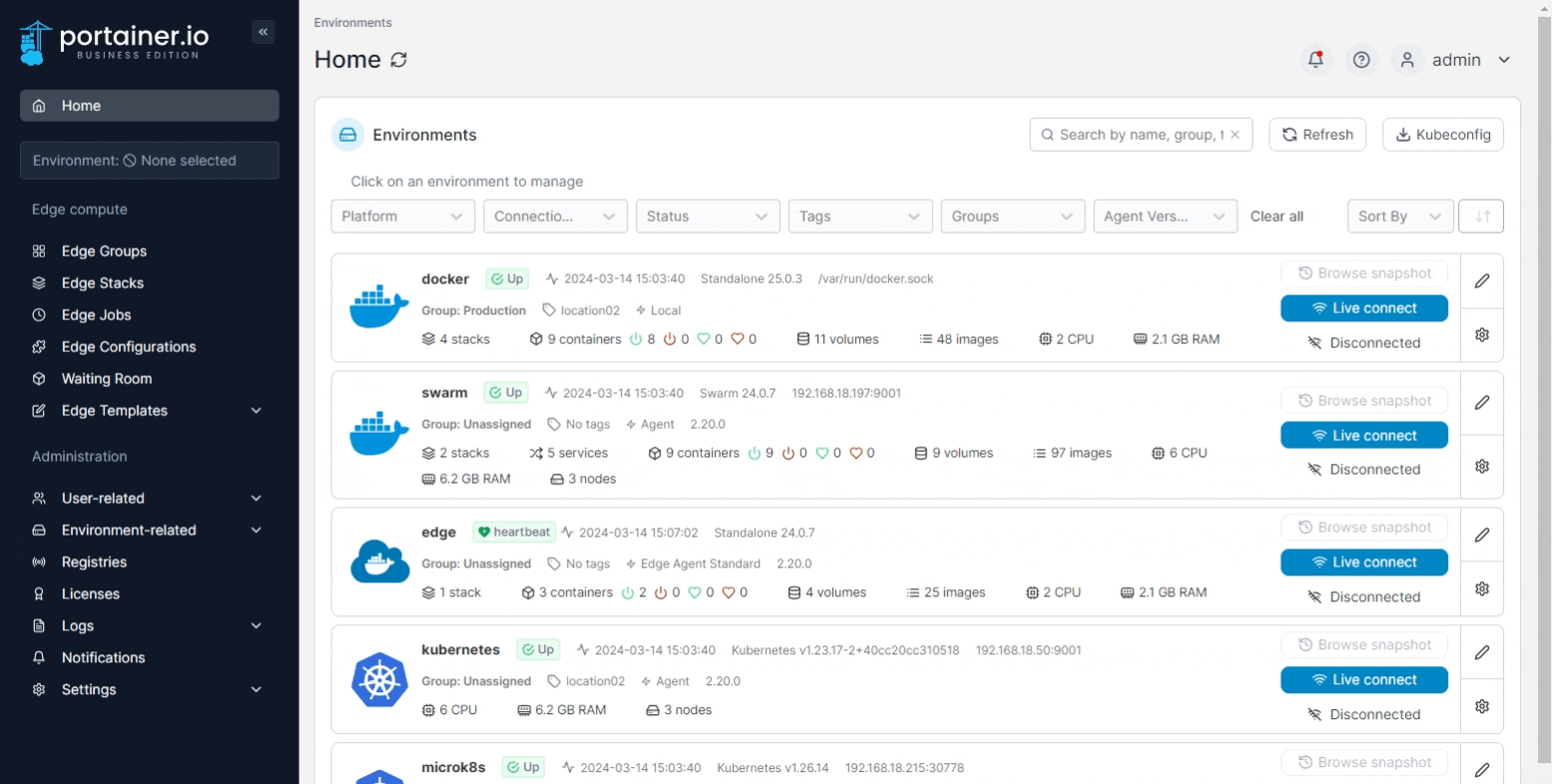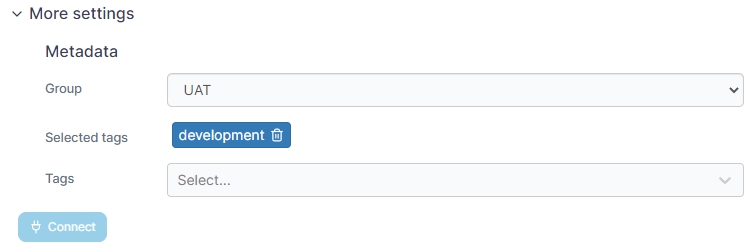Connect to the Docker API
Before you begin, you will need to ensure that your Docker instance is configured to admit remote connections. To learn how to do this, refer to Docker's own documentation. Once Docker is configured, you will be able to connect either with or without TLS.
From the menu expand Environment-related, click Environments, then click Add environment.

Next, select Docker Swarm as the environment type then click Start Wizard. Select the API option and your platform, then enter the environment details using the table below as a guide:
Name
Give the environment a descriptive name.
Docker API URL
Enter the DNS name or IP address to connect to the Docker host along with the port. When connecting without TLS, the default port is 2375. When connecting with TLS, the default port is 2376.
TLS
Toggle this option on if you wish to use TLS. Toggle it off if you don't want to use TLS.
Skip Certification Verification
Toggle this option on to skip the verification of the TLS certificate used by the Docker API. If this option is off, the below fields will not appear.
TLS CA certificate
Select your CA certificate.
TLS certificate
Select your certificate.
TLS key
Select the key that matches the certificate.

As an optional step you can expand the More settings section to categorize the environment by adding it to a group or tagging it for better searchability.

When you're ready, click Connect. If you have other environments to configure click Next to proceed, otherwise click Close to return to the list of environments.
Was this helpful?